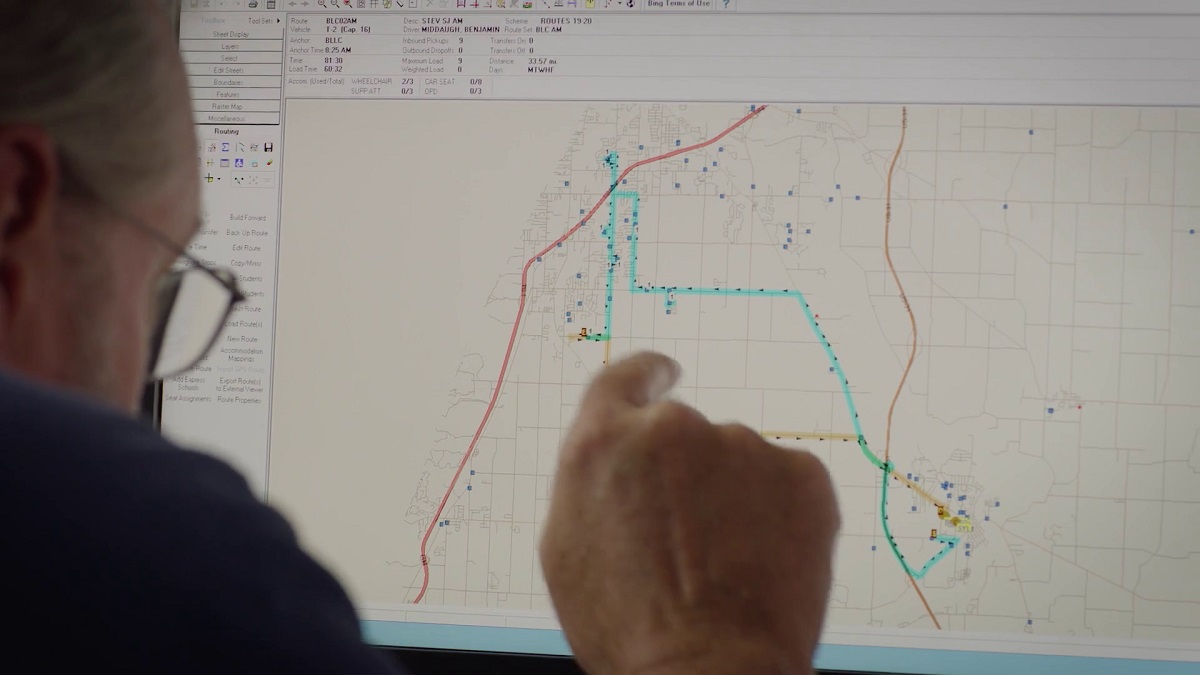
Innovative routing techniques can help mitigate the driver shortage challenges many districts face. Not every idea will be applicable to your district, but sometimes it only takes a modest change or two to make a significant difference.
Electronic Routing Systems
- If your district builds and maintains routes manually, without the benefit of electronic routing software, it is strongly suggested that you consider implementing one sooner than later.
- While it will take an investment of resources, routing systems can easily map out scenarios and highlight efficiencies in ways that manual routing methods cannot. All of the following strategies can be executed faster and more accurately using an electronic routing system.
General Efficiency
- Consider run time and seat utilization. Look for runs that don’t utilize all operating time windows AND available seats. These may be opportunities for consolidation.
- Utilize run and route optimization tools in your routing systems to automate consolidation opportunities.
Strategic Double Looping
- Run two shorter routes with the same bus rather than one long route. Under the right circumstances, you can sometimes transport more students using this technique.
- Look at schools with the shortest average run times. For example, take a school with three runs averaging 35 minutes and turn that into four runs with two being very short 15 minutes or less and the other two longer. This turns three buses into two.
Bell Times
- While they can be very difficult to change for many school districts, bell time adjustments are often the most impactful strategy to achieve route/driver reductions.
Levels of Service
- Can stops be consolidated and still be compliant with district walk-to-stop distances?
- If you have available seats on buses, even modest increases in ride times can result in run reductions. Changes do not have to be done across-the-board. Strategically selected runs can be impactful.
Transportation Eligibility Rules
- Extend walk zones, because larger walk zones reduce eligible riders, which reduces transportation demand.
- To reduce route/driver requirements, some districts have eliminated (or dramatically pared back) transportation service to high school students.
Alternative Transportation Options
- Consider adding vans to your fleet! Vans don’t require CDLs, making drivers easier to recruit and hire. If you have difficult to service students or geographic areas, vans can be leveraged to reduce some yellow bus demand.
- Leverage city transportation to current yellow bus riders – especially high school students.
Route to actual ridership
- Routes are often built based on eligible ridership. However, many eligible students do not actually ride the bus. Routing to actual riders is an opportunity to reduce routes.
- Once startup routes have stabilized, collect actual ridership information from your drivers. Use this data to tighten your routes and remove any slack that might exist from the route plans built on eligible ridership.
Finally, leverage our knowledge and expertise. First Consulting can provide help with any of the above techniques, or provide guidance and support as you work to deploy these strategies.
Ready to learn more?